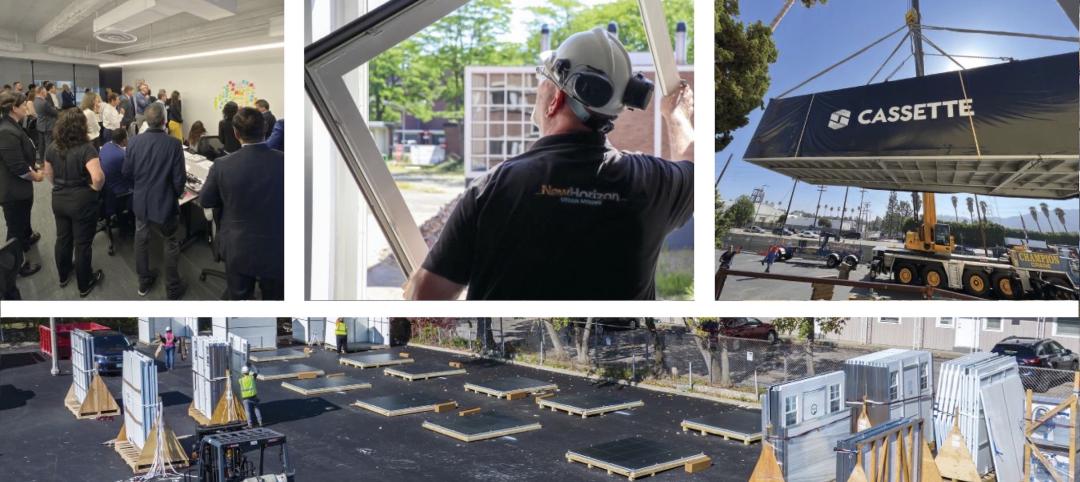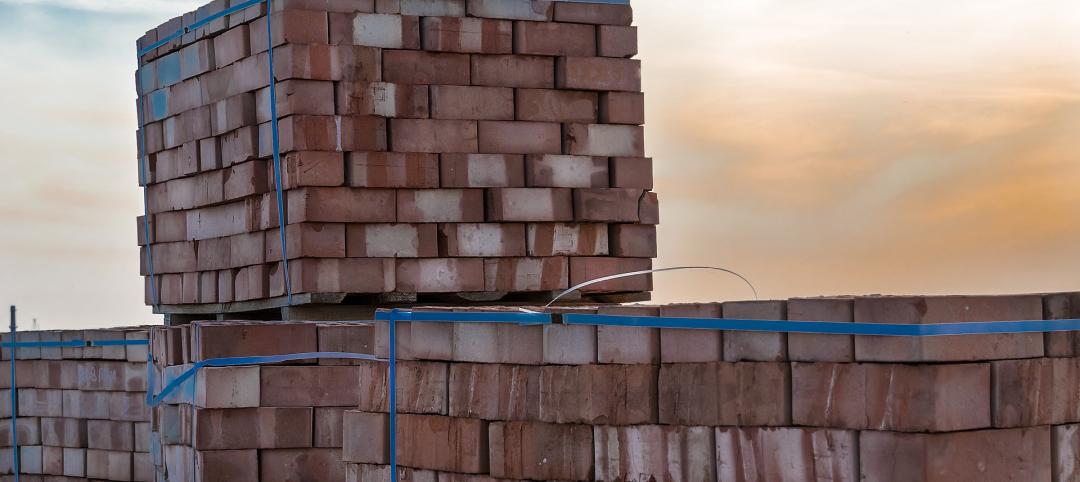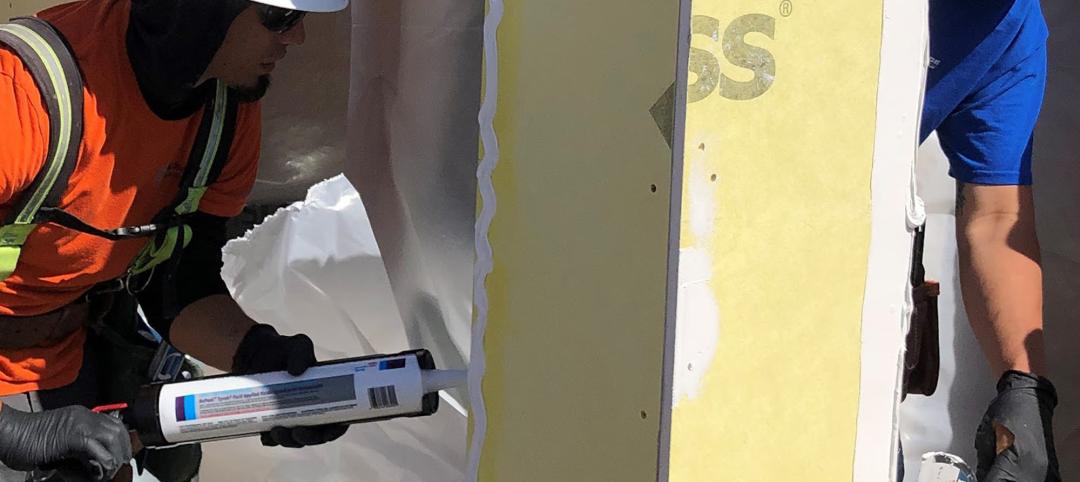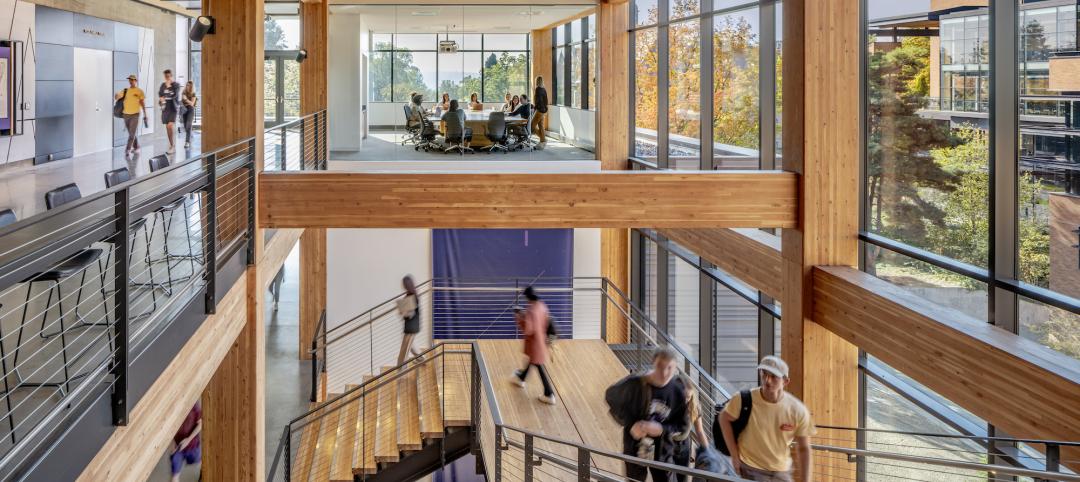Sto Corp., a leader in facade claddings, air barriers, coatings, and renovation systems, has made recent advancements in its branded Sto Panel Technology business. Sto Panel Technology, which produces fully engineered and tested prefabricated finished exterior megapanel systems, is now introducing the versatility of 3D printing to its megapanels with StoPanel 3DP powered by Branch Technology. Sto is also bringing megapanel walls and windows together in a more efficient and integrated way through a collaboration with Kawneer North America.
“At Sto, our overarching goal is to provide architects, designers, and building professionals with the widest range of aesthetics through the most complete collection of building enclosure systems via our offsite construction technologies,” said Tyson Kindstrom, vice president of industrialized construction with Sto. “Megapanels continue to present a host of value propositions to construction professionals – from design freedom, greater efficiencies, and collapsed project timelines to potential cost savings.”
STO/BRANCH TECHNOLOGY: '3D DESIGN FREEDOM' FOR EXTERIOR WALLS
StoPanel 3DP delivers unprecedented three-dimensional design freedom for exterior walls. The megapanel system includes all the building envelope control layers integrated with a unique, fully customizable 3D-printed composite facade. The 3D component, called the Composite Core, is lightweight, structurally robust, and easy to install. Branch’s unique Cellular Fabrication (C-Fab) 3D printing process gives designers and architects the ability to stretch the limits of their creativity. The technology enables StoPanel 3DP to create virtually any 3D shape or form at a large scale.
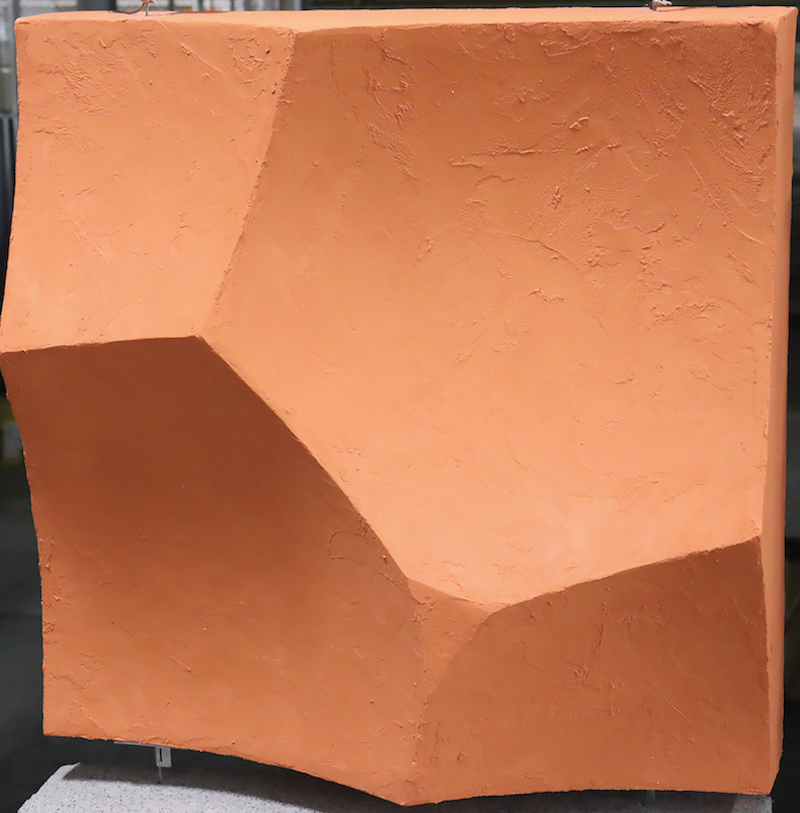
“StoPanel 3DP bridges the gap between design freedom and precision manufacturing to achieve phenomenal results for the building envelope,” said Karine Galla, senior project manager for Sto. “To arrive at this solution, Branch Technology robotically prints a lightweight polymer matrix and then fills that matrix with an insulating foam, providing continuous insulation for the wall panel. Digital files are used versus shop drawings in this manufacturing process, ensuring extreme accuracy that is true to the original design. The result is three-dimensional exterior facade that turns heads and sets a building’s design apart.”
STO AND KAWNEER: INTEGRATING WALLS AND WINDOWS
Sto Panel Technology’s collaboration with Kawneer North America integrates windows and walls together in the manufacturing process, achieving greater efficiencies and improved safety on the job site. Kawneer window receptors are installed during the offsite production of the StoPanel megapanels.
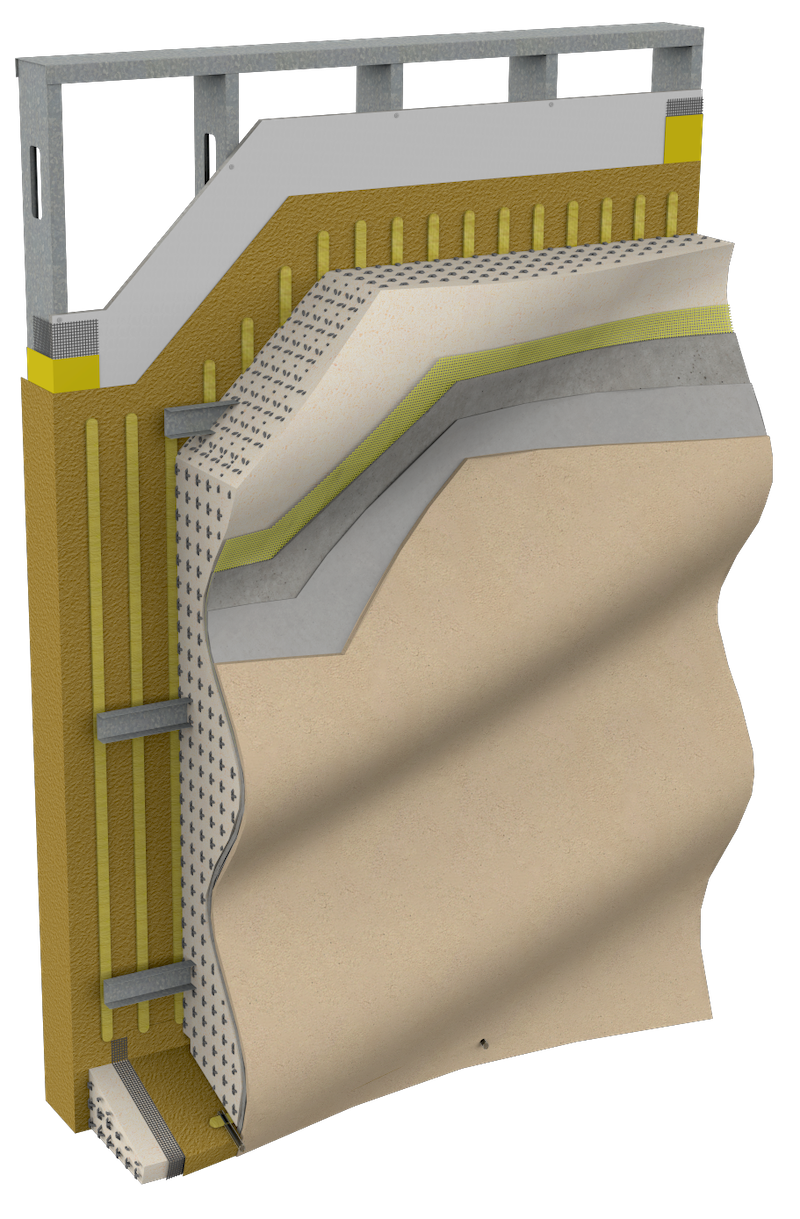
“This has a measurable impact on window installation once StoPanels have been shipped to a location,” said Richard Martens, director of business development for Sto. “By fully integrating the prefabricated wall and window system, crews can install the windows from the inside of the building versus shipping the windows with the wall panels or performing installations from the exterior of the building. It allows for a seamless installation option that drives down material and labor costs while reducing site safety risks.”
Sto Panel Technology and Kawneer North America have conducted independent, third-party testing of the StoPanel with Kawneer windows and customized receptors. The testing covered air leakage resistance, dynamic water penetration resistance, and structural loading. The results showed no water penetration through the StoPanel or the window receptor and perimeter sealant assembly at a test pressure of 10.0 psf, while also meeting a design pressure rating of 40 psf. The system consisting of the StoPanel, Kawneer window and receptor installed in the StoPanel, and window perimeter sealant met the requirements for a 40 psf DP rating when tested in accordance with AAMA 1010.
Sto and Kawneer North America are designing a system with a new high thermal window and receptor to meet more stringent codes. It will also be tested to AAMA 1010.
For more information on Sto Panel, visit www.stopanel.com.
Related Stories
AEC Innovators | Mar 3, 2023
Meet BD+C's 2023 AEC Innovators
More than ever, AEC firms and their suppliers are wedding innovation with corporate responsibility. How they are addressing climate change usually gets the headlines. But as the following articles in our AEC Innovators package chronicle, companies are attempting to make an impact as well on the integrity of their supply chains, the reduction of construction waste, and answering calls for more affordable housing and homeless shelters. As often as not, these companies are partnering with municipalities and nonprofit interest groups to help guide their production.
Codes | Mar 2, 2023
Biden Administration’s proposed building materials rules increase domestic requirements
The Biden Administration’s proposal on building materials rules used on federal construction and federally funded state and local buildings would significantly boost the made-in-America mandate. In the past, products could qualify as domestically made if at least 55% of the value of their components were from the U.S.
AEC Innovators | Mar 2, 2023
Turner Construction extends its ESG commitment to thwarting forced labor in its supply chain
Turner Construction joins a growing AEC industry movement, inspired by the Design for Freedom initiative, to eliminate forced labor and child labor from the production and distribution of building products.
AEC Innovators | Feb 28, 2023
Meet the 'urban miner' who is rethinking how we deconstruct and reuse buildings
New Horizon Urban Mining, a demolition firm in the Netherlands, has hitched its business model to construction materials recycling. It's plan: deconstruct buildings and infrastructure and sell the building products for reuse in new construction. New Horizon and its Founder Michel Baars have been named 2023 AEC Innovators by Building Design+Construction editors.
Codes and Standards | Feb 8, 2023
GSA releases draft of federal low embodied carbon material standards
The General Services Administration recently released a document that outlines standards for low embodied carbon materials and products to be used on federal construction projects.
Concrete | Jan 24, 2023
Researchers investigate ancient Roman concrete to make durable, lower carbon mortar
Researchers have turned to an ancient Roman concrete recipe to develop more durable concrete that lasts for centuries and can potentially reduce the carbon impact of the built environment.
Standards | Jan 19, 2023
Fenestration Alliance updates liquid applied flashing standard
The Fenestration and Glazing Industry Alliance (FGIA) published an update to its Liquid Applied Flashing Standard. The document contains minimum performance requirements for liquid applied flashing used to provide water-resistive seals around exterior wall openings in buildings.
Sponsored | Resiliency | Dec 14, 2022
Flood protection: What building owners need to know to protect their properties
This course from Walter P Moore examines numerous flood protection approaches and building owner needs before delving into the flood protection process. Determining the flood resilience of a property can provide a good understanding of risk associated costs.
K-12 Schools | Nov 30, 2022
School districts are prioritizing federal funds for air filtration, HVAC upgrades
U.S. school districts are widely planning to use funds from last year’s American Rescue Plan (ARP) to upgrade or improve air filtration and heating/cooling systems, according to a report from the Center for Green Schools at the U.S. Green Building Council. The report, “School Facilities Funding in the Pandemic,” says air filtration and HVAC upgrades are the top facility improvement choice for the 5,004 school districts included in the analysis.
University Buildings | Nov 13, 2022
University of Washington opens mass timber business school building
Founders Hall at the University of Washington Foster School of Business, the first mass timber building at Seattle campus of Univ. of Washington, was recently completed. The 84,800-sf building creates a new hub for community, entrepreneurship, and innovation, according the project’s design architect LMN Architects.



